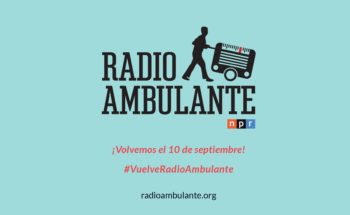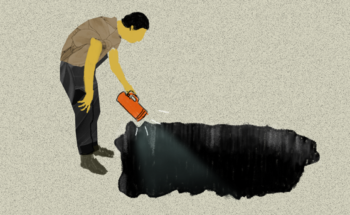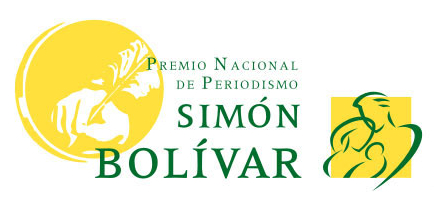
Behind Nadja Drost’s Microphone
Share:
Nadja Drost has won the Premio Nacional de Periodismo Simón Bolívar in Colombia for her story N.N. (No Name) which was produced for Radio Ambulante. Although she is Canadian, a strange and incredible story in Colombia led her to Puerto Berrio, a place where nameless dead come floating down the Magdalena river . In 2012, we asked her a few questions about her background, and her experience producing this piece.

Nadja Drost (foto: S. Ferry)
How did you get your start in radio?
Nadja: I started reporting radio pieces while I gave a shot at freelancing from Sierra Leone in 2007. My pieces were disasters. Not only did I come up against big technological hurdles in filing my pieces (electricity in Sierra Leone at the time all came from generators and high-speed internet was nowhere to be found) but I had no idea had to write a script for radio. I can’t believe my editors had the patience and tolerance to work on those pieces with me.
The following year, while doing a Master’s degree in journalism at Columbia University, I decided to take an intensive radio course. I learned a ton, and I was far more prepared to tell radio stories when I got back into the field. It also made me gain far more of an appreciation for the unique medium that is radio and how it requires a different approach in reporting and storytelling than other mediums.
What first drew you to Colombia? To Puerto Berrio?
Nadja: I had been interested in Colombia and its armed conflict since living in Ecuador in 1999. Before going into journalism, I worked on human rights issues in Latin America, and the more I learned about Colombia, the more interested I became. As a part of my journalism degree, I went to Colombia a couple times to report a long, in-depth story. I was there to report one story, but I wanted to report on the many more I saw everywhere around me. Colombia has a wealth of incredibly compelling, and often dramatic, stories and I decided eventually I wanted to move there to be able to report them. I’ve been living here since 2009.
Personally, I’ve always felt very drawn to cemeteries. They are full of stories and I try to visit them where I travel. So I was naturally interested in Puerto Berrio’s unique cemetery when I heard about it. But the story had this bizarre, incredible nature to it that called up the phrase one hears foreigners as well as Colombians, mystified by their own country, say: “Only in Colombia.”
There are many remarkable turns-of-story that transpire in Colombia that are referred to as “muy Macondo” (the fictional town featured in Gabriel Garcia Marquez’s writing) in that they are extraordinary and often seemingly inexplicable, and the story of Puerto Berrio’s anonymous dead seemed just that. Colombia has a long history of violence and the way the Colombians have dealt with it manifests in many different ways. This struck me as one that I wanted to explore.
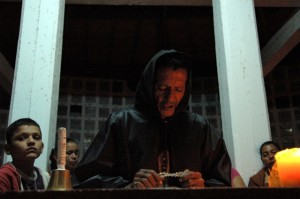
Foto: Nadja Drost
How was your experience traveling to Puerto Berrio, alone? Was it hard to get people to talk to you about their intimate stories?
Nadja: I didn’t find it very difficult to get people to talk about their experiences and personal stories. They are aware their town has been through tremendous violence and for many of them, I think the fact that there are townspeople who care for the anonymous dead is a point of pride, not shame. I think that many in Puerto Berrio see both the compassion and peculiarity in it, and could understand why I’d be interested in the story.
I had time on my side, in the sense that for many of the personal stories I heard, some years had already passed. I think that for many people who experience extremely sad or traumatic events, the passing of time can make those events a lot easier to talk about.
Also, even though it can be painful for people to recount certain stories, I think they sometimes appreciate that someone is interested in hearing them, because it serves as an acknowledgement, a recognition, of what they, or their town, have gone through.
Violence has subsided a lot in Puerto Berrio, and the intense fear that residents felt for many, many years is no longer pervasive nor wide-spread. People could tell me their stories without being afraid of repercussions and in a climate where that fear no longer hangs.
What challenges did you face in terms of telling the story of the NNs in sound?
Nadja: The main challenge was that much of what I wanted to tell didn’t involve action or had happened in the past – losing a loved one, finding a dead body or adopting a corpse. I looked for ways for the piece to sound more active and immediate, so when I could, I had people show me things – the gravedigger showing me different tombs of anonymous corpses, the fisherman taking me to where he happened across floating bodies on the river — so that listeners could get a sense for the place where the story was unfolding and characters’ relationship to it.
The decision to become part of the story — to show to Nuri the NN tombs — is an interesting one. At the time did you see it in those terms? Do you now? Why or why not?
Nadja: I didn’t see me telling Nuri about the tombs as a decision to become part of the story. When Nuri told me that she very much wanted to find a new N.N. for herself, I had just learned that there were five available ones, so it felt completely natural for me to tell her. Not doing so would have felt unnatural, as if someone tells you they’re looking for a particular kind of bicycle – the very kind you happened to see in a store the other day – and you’d keep that information from them.
When I told Nuri about the tombs, her enthusiasm was immediate and she asked me to show her where they were. It was obvious that another chapter was about to be added on to Nuri’s story and I wanted to record it as it was unfolding.
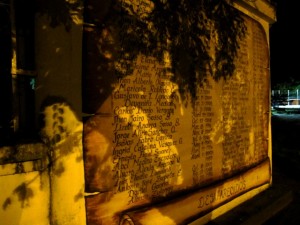
Desaparecidos (Foto: Nadja Drost)
You also work in film and print journalism. How is radio storytelling different?
Nadja: In radio, you have to help listeners see what they can’t. So being able to paint a picture through sound, and not just a verbal description, becomes important. And sound can in fact do a lot to conjure up not only images, but mood – think about the sound of waves lapping, or the hushed drone of people chanting.
Listeners need to be able to follow a story without the benefit of images on a screen or a printed paragraph they can linger on. So it’s especially important for a story in radio to be clear and easy to follow. And it helps to have active scenes, where a character is doing something, or the story is developing in some way – and your microphone is there to record it. So being there becomes that much more important.



